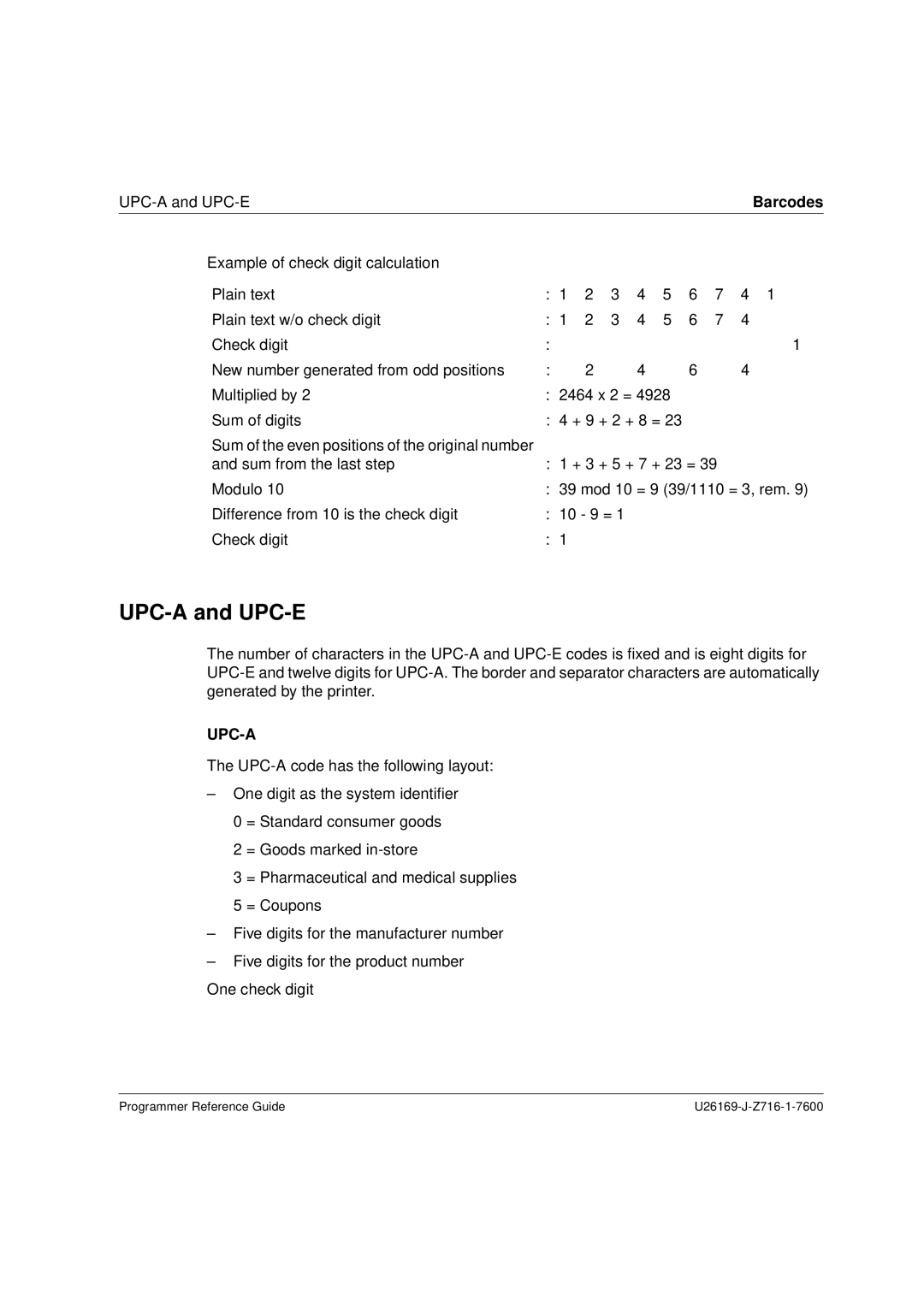|
|
|
|
|
|
|
|
| Barcodes | |
Example of check digit calculation |
|
|
|
|
|
|
|
|
|
|
Plain text | : | 1 | 2 | 3 | 4 | 5 | 6 | 7 | 4 | 1 |
Plain text w/o check digit | : | 1 | 2 | 3 | 4 | 5 | 6 | 7 | 4 |
|
Check digit | : |
|
|
|
|
|
|
|
| 1 |
New number generated from odd positions | : |
| 2 |
| 4 |
| 6 |
| 4 |
|
Multiplied by 2 | : | 2464 x 2 = 4928 |
|
|
|
| ||||
Sum of digits | : | 4 + 9 + 2 + 8 = 23 |
|
|
|
| ||||
Sum of the even positions of the original number |
|
|
|
|
|
|
|
|
|
|
and sum from the last step | : | 1 + 3 + 5 + 7 + 23 = 39 |
|
| ||||||
Modulo 10 | : | 39 mod 10 = 9 (39/1110 = 3, rem. 9) | ||||||||
Difference from 10 is the check digit | : | 10 - 9 = 1 |
|
|
|
|
|
| ||
Check digit | : | 1 |
|
|
|
|
|
|
|
|
UPC-A and UPC-E
The number of characters in the
UPC-A
The
–One digit as the system identifier 0 = Standard consumer goods 2 = Goods marked
3 = Pharmaceutical and medical supplies
5 = Coupons
–Five digits for the manufacturer number
–Five digits for the product number
One check digit
Programmer Reference Guide |
